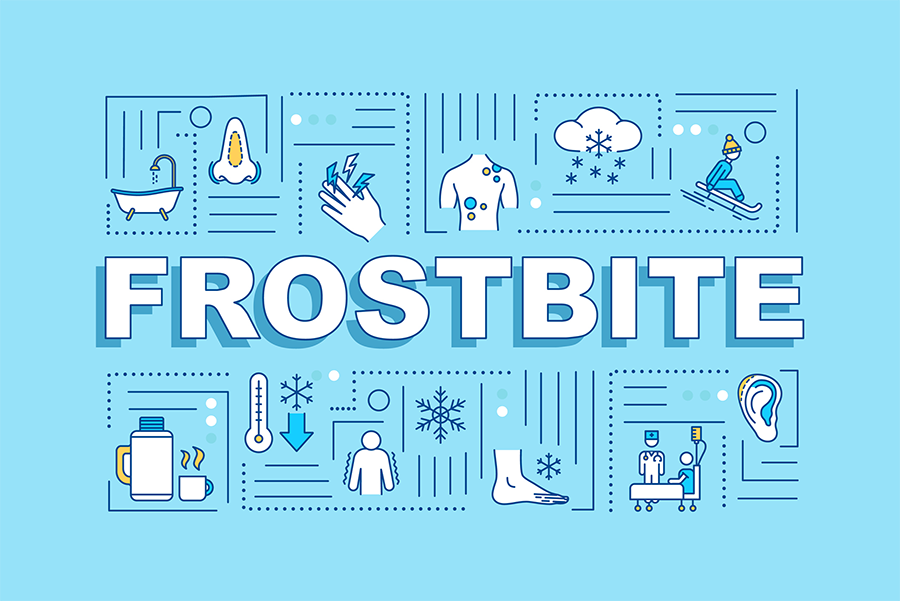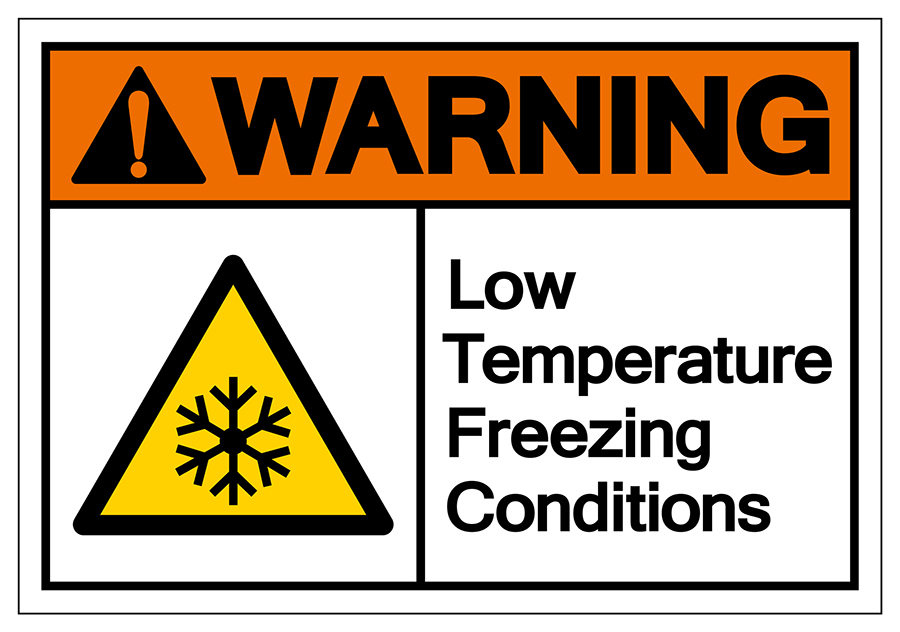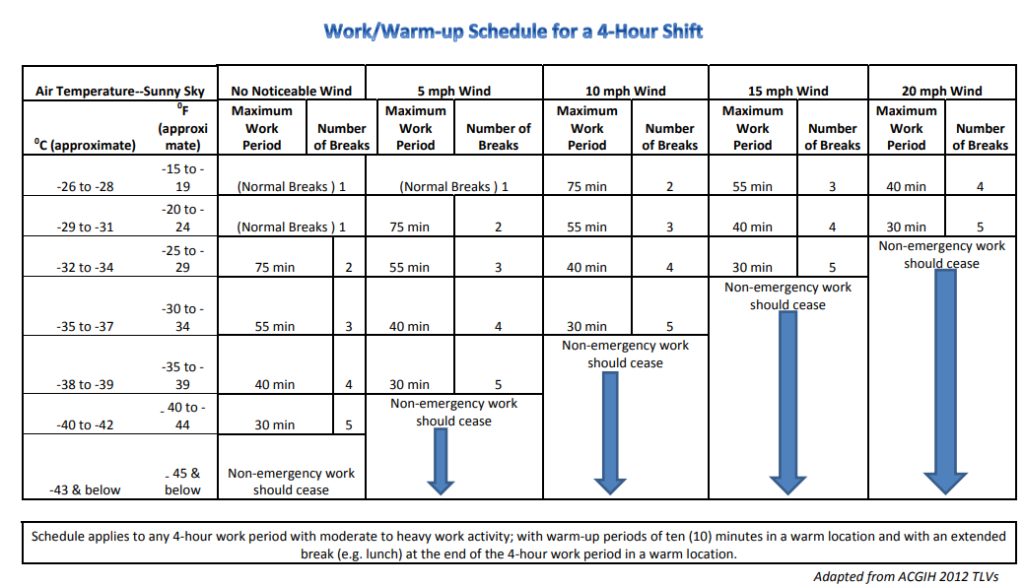Cold Stress and its Safety Measures
Cold stress occurs by driving down the skin temperature, and eventually the internal body temperature. When the body is unable to warm itself, it can lead to serious consequences. You can suffer cold-related illnesses. Injuries may occur as well, causing permanent tissue damage. It may also lead to death. It is a relative term. The definition and effects can vary across different regions in the United States. Warmer regions, like California, treat near-freezing temperatures as cold weather. Whereas cooler regions, like Alaska, where temperatures remain below freezing year-round, do not treat even sub-zero temperatures as alarming.

The wind chill effect, leading to increased wind speed also causes cold stress. Wetness or dampness can also lead the human body to lose heat. Sweating can also lead to wetness, which may result in heat loss from the body. Its types include trench foot, frostbite, and hypothermia.
Who is Affected by the Environmental Cold?
Environmental cold can affect any worker exposed to cold air temperatures and puts workers at risk of cold stress. As wind speed increases, it causes the cold air temperature to feel even cooler. This increases the risk of cold stress to exposed workers. Those working outdoors, such as recreational workers, snow cleanup crews, construction workers, police officers, and firefighters are especially at risk. Exposure to environmental cold may also affect workers in transit, baggage handlers, water transportation, and landscaping services. Even workers in support roles for oil and gas operations are also at risk.
Risk factors for cold stress include:
- Wetness/dampness, inadequate warm dressing, and body exhaustion
- Preexisting health conditions such as hypertension, hypothyroidism, and diabetes
- Poor acclimatization to cold weather

Preventing Cold Stress
Employers need to know the wind chill temperature to assess worker exposure risk to cold stress. Employers must also monitor workers’ physical condition during tasks. They must pay special attention to new workers not used to working in the cold or returning to work after leave.
OSHA cold stress guidelines do not have a specific standard that covers working in chili weather environments. However, under the Occupational Safety and Health Act (OSH Act), employers have a duty to protect their workers from known hazards that are causing or likely to cause death or serious injury at the workplace. So the OSH Act indirectly addresses these hazards.
Workers can also enroll in short cold stress awareness courses to learn how to safely operate in colder working environments. Along with the english language, cold stress training online is also available in Spanish , French , German , Chinese , Japanese , Italian , Korean and Portuguese.
According to OSHA cold stress guidelines, employers should monitor the physical condition of their workers. They should schedule frequent short breaks in warm dry areas for their employees. This will allow them to keep their bodies warm. Employers should also try to schedule work during warmer hours of the day. They should have a buddy system in place. When employees are working in pairs, if one of them is suffering from cold stress, the other employee can help him get medical attention. Employers should provide warm and sweet drinks for employees. This will allow them to maintain a healthy body temperature and a healthy energy level. Employers should also discourage the consumption of alcoholic drinks at the workplace. They should also provide heaters in cold weather areas to maintain a safe and comfortable working environment.
Employers should train workers on how to deal with cold stress.
- Recognizing the environmental and workplace conditions that can lead to cold stress.
- The symptoms of cold stress, how to prevent cold stress, and what to do to help those who are affected.
- How to select proper clothing for cold weather conditions.

Wind Chill Guide for Employers
Outdoor workers exposed to cold and windy conditions are susceptible to cold stress. Both air temperature and wind speed affect how cold they feel. Wind Chill is the rate of heat loss from the body caused by low air temperature and high wind speed. The Wind Chill Temperature is a single value that includes both air and wind speed. For example, when the air temperature is 40°F and the wind speed is 35mph, the wind chill temperature is 28°F. This measurement is the actual effect of the environmental cold on the exposed skin.
The National Weather Service (NWS) Wind Chill Calculator is a useful tool to determine the wind chill temperature. You only need to input the air temperature and wind speed, and it will calculate the wind chill temperature.
The American Conference of Governmental Industrial Hygienists (ACGIH) has developed the following Work/Warm-up Schedule for a 4-hour shift. It takes both air temperature and wind speed into account. This is a useful guide on scheduling work breaks and ceasing non-emergency work.

Conclusion
Understanding and mitigating cold stress is extremely important for protecting workers exposed to cold environments. Employers must implement comprehensive measures, including monitoring conditions, scheduling breaks, and providing proper training.
Adhering to OSHA guidelines and using tools like the Wind Chill Calculator can help manage risks effectively. Ultimately, a proactive approach can prevent cold-related illnesses and injuries. This will make sure your workplace stays productive and safe despite hostile weather conditions.





